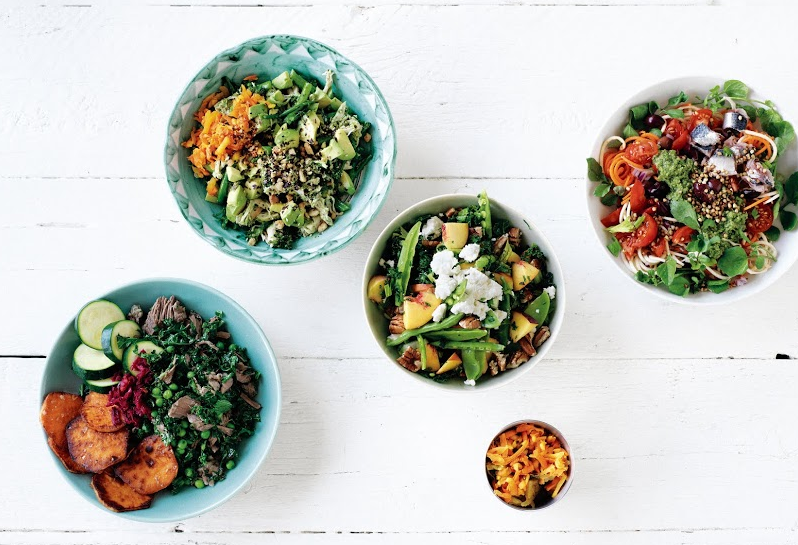These one-pan, two-minute mélanges are my standard lunch (or breakfast, or dinner) fare and I’ve included a big bunch of great combos in I Quit Sugar: Simplicious. I must admit I felt weird putting them into a recipe format because I mostly make them on a whim, using what I’ve got (and a few too many lax cooking techniques). But I’ve been asked so many times to formalise things. So….a simpliciously simple post on how I build my bowls. I’ve focused on the cooked ones here, but there are raw, summery ones in the book too.

Step 1: Start with 3 serves of veggies
1 serve = 1 cup leafy greens or ½ cup all other veg.
Sauté in oil or sweat in 2 frozen stock cubes or ferment in brine. At the office we all do this and share the one pan around, multi-using each others’ juices. At home I’ll work from the one pan all day, making best use of leftover flavours and fats in the pan.
Step 2: Add 1 serve of protein
It could be 2 eggs, a palm-sized portion of meat (mostly leftover or bulk-cooked, stored in freezer in 1/2 cup portions ready to tote to the office), or 1 cup properly-prepared legumes (I explain the best ways in the book and again I keep ziplock bags of the things in my freezer).
Deglaze, if required, with a big splash of ferment, brine or apple cider vinegar, or a squeeze of lemon juice.
Step 3: Stir through 1-3 tablespoons of fat
For me, this would look like drizzles of dressing, oil, cheese or avocado.
As you know, you need saturated fat to absorb essential vitamins A, E, K and D, and to digest meat protein. You’re wasting your time without it.
Step 4: Add an enzyme kick
1-2 tablespoons fermented veggies, or enzyme-rich food like sprouts or bitter vegetables. Optional. But good for aiding digestion.
Step 5: Flavour bomb
Flavour bomb your bowl with Soup Toppers, Seaweed Dukkah, Kale Flakes, Celery Leaf Salt (these flavour bombs are all from I Quit Sugar: Simplicious), capers, dulse flakes, fresh herbs etc.
Raw vs. cooked bowls
Both have benefits.
Raw: Cooking can reduce a food’s enzymes and the fewer enzymes in a food, the more our own body’s enzymes must be drawn upon to break down a meal. The more of our own enzymes we use, the quicker we age.
Cooked: Many of the vitamins and minerals in vegetables are embedded in the plant’s cellulose walls, which require cooking to break them down. So many of the valuable nutrients in raw vegetables end up not being absorbed by the body.
I advocate a mix of raw and cooked foods across a meal/your day of 70 per cent cooked, 30 per cent raw (varying a little from winter to summer). The best way to get your raw fix is via ferments (where the fermentation breaks down the tough cellulose walls) and eating vegetables that are meant to be eaten raw e.g. lettuce and cucumber.
How do you pimp your abundance bowls? Any tips or questions?

